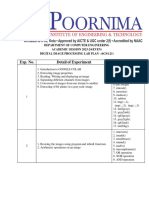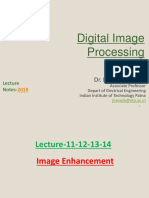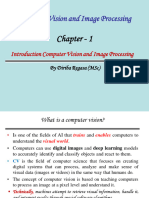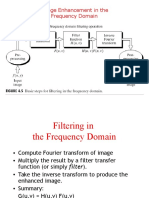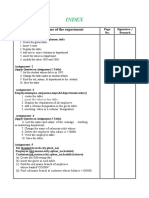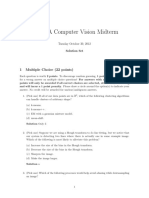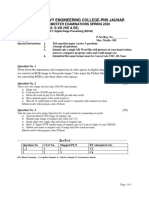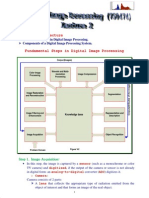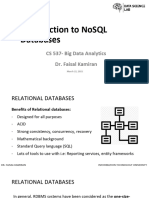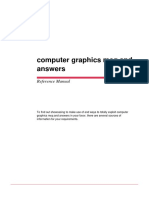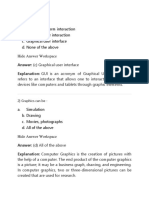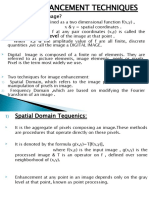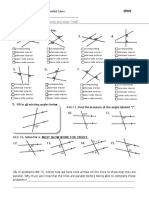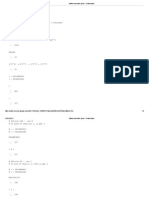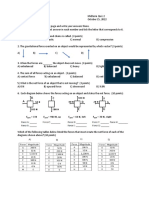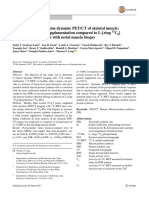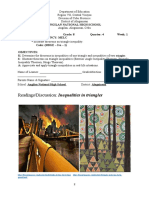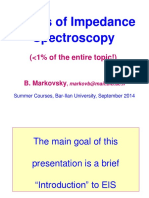0% found this document useful (0 votes)
243 views7 pagesAssignment 2: Image Processing and Computer Vision
This document discusses various image processing techniques:
1) Image enhancement by point processing includes methods like negative transformation and logarithmic transformation that manipulate pixel intensities in an image. Negative transformation inverts the pixel values while logarithmic transformation maps a wide range of low input values to a narrower output range.
2) Smoothing spatial filters like mean filters are used to blur images and reduce noise, while order statistic filters like median filters preserve edges better by replacing pixel values with rankings of neighbor pixels.
3) Image sharpening can be done using the Laplacian operator, which is a second derivative filter that detects edges by finding regions of rapid intensity change. The Laplacian mask highlights these edges by making contrast between dark
Uploaded by
Ansh MathurCopyright
© © All Rights Reserved
We take content rights seriously. If you suspect this is your content, claim it here.
Available Formats
Download as PDF, TXT or read online on Scribd
0% found this document useful (0 votes)
243 views7 pagesAssignment 2: Image Processing and Computer Vision
This document discusses various image processing techniques:
1) Image enhancement by point processing includes methods like negative transformation and logarithmic transformation that manipulate pixel intensities in an image. Negative transformation inverts the pixel values while logarithmic transformation maps a wide range of low input values to a narrower output range.
2) Smoothing spatial filters like mean filters are used to blur images and reduce noise, while order statistic filters like median filters preserve edges better by replacing pixel values with rankings of neighbor pixels.
3) Image sharpening can be done using the Laplacian operator, which is a second derivative filter that detects edges by finding regions of rapid intensity change. The Laplacian mask highlights these edges by making contrast between dark
Uploaded by
Ansh MathurCopyright
© © All Rights Reserved
We take content rights seriously. If you suspect this is your content, claim it here.
Available Formats
Download as PDF, TXT or read online on Scribd
/ 7

















